The conserved RNA-binding protein Imp is required for the specification and function of olfactory navigation circuitry in Drosophila
- PMID: 38181792
- PMCID: PMC10872534
- DOI: 10.1016/j.cub.2023.12.020
The conserved RNA-binding protein Imp is required for the specification and function of olfactory navigation circuitry in Drosophila
Abstract
Complex behaviors depend on the precise developmental specification of neuronal circuits, but the relationship between genetic programs for neural development, circuit structure, and behavioral output is often unclear. The central complex (CX) is a conserved sensory-motor integration center in insects, which governs many higher-order behaviors and largely derives from a small number of type II neural stem cells (NSCs). Here, we show that Imp, a conserved IGF-II mRNA-binding protein expressed in type II NSCs, plays a role in specifying essential components of CX olfactory navigation circuitry. We show the following: (1) that multiple components of olfactory navigation circuitry arise from type II NSCs. (2) Manipulating Imp expression in type II NSCs alters the number and morphology of many of these circuit elements, with the most potent effects on neurons targeting the ventral layers of the fan-shaped body (FB). (3) Imp regulates the specification of Tachykinin-expressing ventral FB input neurons. (4) Imp is required in type II NSCs for establishing proper morphology of the CX neuropil structures. (5) Loss of Imp in type II NSCs abolishes upwind orientation to attractive odor while leaving locomotion and odor-evoked regulation of movement intact. Taken together, our findings establish that a temporally expressed gene can regulate the expression of a complex behavior by developmentally regulating the specification of multiple circuit components and provides a first step toward a developmental dissection of the CX and its roles in behavior.
Keywords: RNA-binding proteins; central complex; neural cell fate; neural circuits; neural identity; neural stem cells; neuropeptides; olfactory navigation; temporal patterning; type II lineages.
Copyright © 2023 The Author(s). Published by Elsevier Inc. All rights reserved.
Conflict of interest statement
Declaration of interests The authors declare no competing interests.
Figures

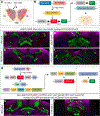
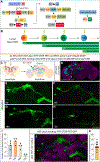
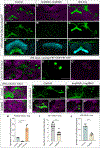
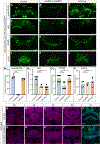
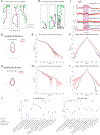
Update of
-
The RNA-binding protein, Imp specifies olfactory navigation circuitry and behavior in Drosophila.bioRxiv [Preprint]. 2023 May 29:2023.05.26.542522. doi: 10.1101/2023.05.26.542522. bioRxiv. 2023. Update in: Curr Biol. 2024 Feb 5;34(3):473-488.e6. doi: 10.1016/j.cub.2023.12.020. PMID: 37398350 Free PMC article. Updated. Preprint.
Similar articles
-
Stem cell-specific ecdysone signaling regulates the development of dorsal fan-shaped body neurons and sleep homeostasis.Curr Biol. 2024 Nov 4;34(21):4951-4967.e5. doi: 10.1016/j.cub.2024.09.020. Epub 2024 Oct 8. Curr Biol. 2024. PMID: 39383867
-
The RNA-binding protein, Imp specifies olfactory navigation circuitry and behavior in Drosophila.bioRxiv [Preprint]. 2023 May 29:2023.05.26.542522. doi: 10.1101/2023.05.26.542522. bioRxiv. 2023. Update in: Curr Biol. 2024 Feb 5;34(3):473-488.e6. doi: 10.1016/j.cub.2023.12.020. PMID: 37398350 Free PMC article. Updated. Preprint.
-
The Drivers of Diversity: Integrated genetic and hormonal cues regulate neural diversity.Semin Cell Dev Biol. 2023 Jun;142:23-35. doi: 10.1016/j.semcdb.2022.07.007. Epub 2022 Jul 29. Semin Cell Dev Biol. 2023. PMID: 35915026 Review.
-
Developmental Genetic and Molecular Analysis of Drosophila Central Complex Lineages.Cold Spring Harb Protoc. 2025 Apr 1;2025(4):pdb.top108429. doi: 10.1101/pdb.top108429. Cold Spring Harb Protoc. 2025. PMID: 38622015 Review.
-
Imp and Syp mediated temporal patterning of neural stem cells in the developing Drosophila CNS.Genetics. 2022 Aug 30;222(1):iyac103. doi: 10.1093/genetics/iyac103. Genetics. 2022. PMID: 35881070 Free PMC article. Review.
Cited by
-
Cell type-specific driver lines targeting the Drosophila central complex and their use to investigate neuropeptide expression and sleep regulation.bioRxiv [Preprint]. 2025 Jan 24:2024.10.21.619448. doi: 10.1101/2024.10.21.619448. bioRxiv. 2025. Update in: Elife. 2025 Apr 17;14:RP104764. doi: 10.7554/eLife.104764. PMID: 39484527 Free PMC article. Updated. Preprint.
-
Seven-up acts in neuroblasts to specify adult central complex neuron identity and initiate neuroblast decommissioning.bioRxiv [Preprint]. 2023 Nov 3:2023.11.02.565340. doi: 10.1101/2023.11.02.565340. bioRxiv. 2023. Update in: Development. 2024 Feb 1;151(3):dev202504. doi: 10.1242/dev.202504. PMID: 37961302 Free PMC article. Updated. Preprint.
-
Stem cell-specific ecdysone signaling regulates the development of dorsal fan-shaped body neurons and sleep homeostasis.Curr Biol. 2024 Nov 4;34(21):4951-4967.e5. doi: 10.1016/j.cub.2024.09.020. Epub 2024 Oct 8. Curr Biol. 2024. PMID: 39383867
-
Imp/IGF2BP and Syp/SYNCRIP temporal RNA interactomes uncover combinatorial networks of regulators of Drosophila brain development.Sci Adv. 2025 Feb 7;11(6):eadr6682. doi: 10.1126/sciadv.adr6682. Epub 2025 Feb 7. Sci Adv. 2025. PMID: 39919181 Free PMC article.
-
Stem cell-specific ecdysone signaling regulates the development and function of a Drosophila sleep homeostat.bioRxiv [Preprint]. 2023 Oct 2:2023.09.29.560022. doi: 10.1101/2023.09.29.560022. bioRxiv. 2023. Update in: Curr Biol. 2024 Nov 4;34(21):4951-4967.e5. doi: 10.1016/j.cub.2024.09.020. PMID: 37873323 Free PMC article. Updated. Preprint.
References
-
- Strausfeld NJ (1976). Atlas of an insect brain
Publication types
MeSH terms
Substances
Grants and funding
LinkOut - more resources
Full Text Sources
Molecular Biology Databases

